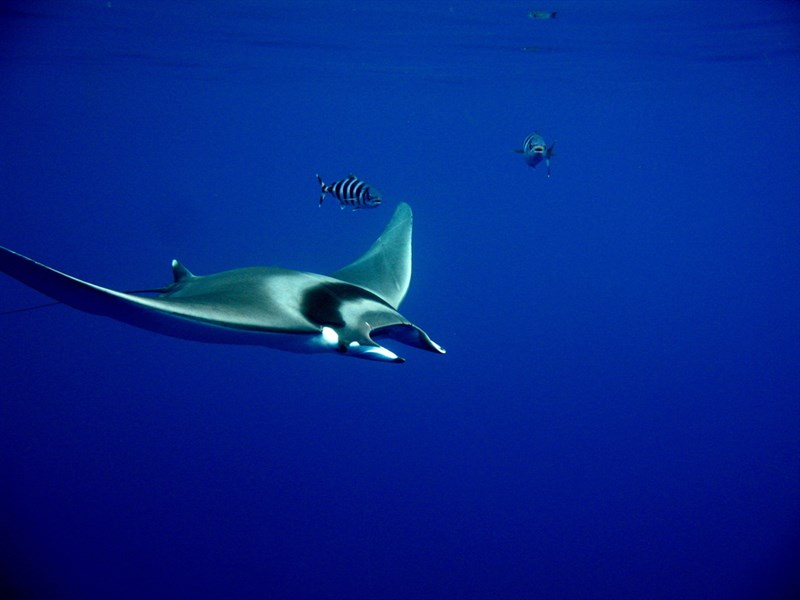The Devilray, Giant Devil Ray, Giant Devilray, Japanese Devilray, Spinetail Devilray, Spinetail Mobula, Japanese Devilray, Spinetail Devil Ray, Mediterranean Mobula, scientifically known as Mobula mobular, is a fascinating and graceful ray species. It is a large and impressive creature, known for its distinctive wing-like pectoral fins and its impressive size.
Description & Characteristics
The Mobula mobular is a large ray that can grow to an impressive maximum size of 520.0 cm. These rays possess a distinctive diamond-shaped body with long, wing-like pectoral fins, giving them an elegant and agile appearance. They have a short, blunt snout and a prominent dorsal fin located near the tail. Notably, their tails are slender and tipped with a pair of prominent, spine-like structures, giving rise to the name “Spinetail Devilray.” These spines are a defense mechanism, capable of inflicting a painful sting if threatened. The coloration of Mobula mobular varies depending on the individual and its habitat, ranging from dark grey to black on the dorsal side and a lighter grey or white on the ventral side.
Habitat and Occurrence
The Mobula mobular is a pelagic species, meaning it inhabits the open ocean. It is typically found in warm temperate and tropical waters, with a depth range of 0.0 to 700.0 meters. This wide depth range reflects their ability to navigate both the surface waters and deeper portions of the ocean. Their distribution encompasses a vast area, spanning the Atlantic, Indian, and Pacific Oceans. They are frequently observed in areas of high productivity, such as upwellings and areas where nutrient-rich water rises to the surface. This preference for these areas is closely linked to their feeding habits.
Taxonomy
The species Mobula mobular belongs to the Class: Elasmobranchii, Order: Myliobatiformes, and Family: Mobulidae. This classification places it within the group of cartilaginous fishes, along with sharks and other rays. The family Mobulidae encompasses a variety of large, pelagic rays, all characterized by their wing-like pectoral fins and often referred to as “devil rays” or “manta rays.”
Feeding
The Mobula mobular is a filter feeder, meaning it consumes small organisms from the water column. Its diet consists primarily of zooplankton, including copepods, krill, amphipods, mysis, and fish larvae. They also feed on other invertebrates, including coral spawn. This feeding strategy is facilitated by their gill rakers, which act like sieves, trapping the small organisms as the ray swims through the water with its mouth open. Their preference for areas of high productivity reflects their need for abundant zooplankton to support their large size and energy needs.

Image References